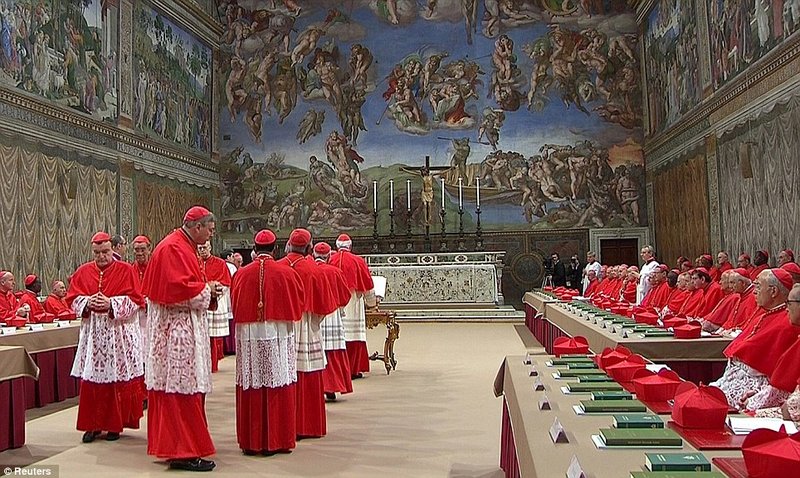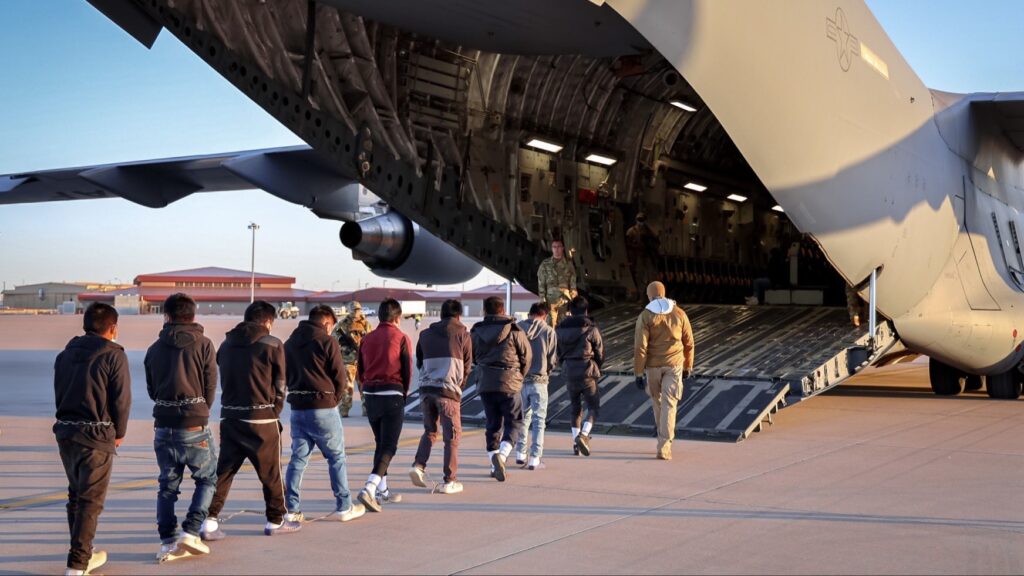How Is A New Pope Chosen? A Comprehensive Guide To Papal Conclaves

Table of Contents
The Process Leading to a Papal Conclave
The process of selecting a new Pope, a Papal Conclave, is initiated by the vacancy of the papacy.
Death or Resignation of the Pope
The death or resignation of the Pope officially declares the sede vacante ("the See is vacant"). This moment marks the beginning of the interregnum, a period between popes.
- The announcement of sede vacante is made public, officially confirming the vacancy of the papacy and initiating the process towards a new election.
- The Cardinal Camerlengo, a high-ranking cardinal, assumes the role of administrator of the Church during this interregnum, managing its affairs until a new Pope is elected. He plays a crucial role in the early stages of the Papal Conclave preparation.
The Conclave's Preparation
Once the See is vacant, preparations for the Papal Conclave begin immediately. This involves the gathering of eligible cardinals, implementing strict security measures, and preparing the Sistine Chapel for the election.
- The College of Cardinals, the body of cardinals worldwide, summons eligible cardinals to participate in the election.
- Intense secrecy and stringent security protocols are enforced to maintain the integrity and confidentiality of the conclave. Access to the conclave location is highly restricted.
- The Sistine Chapel, the traditional venue for the Papal Conclave, undergoes a thorough preparation, ensuring that it is suitably equipped for the election process, including the installation of voting booths and other necessary infrastructure.
The Cardinals: Electors of the Pope
The Papal Conclave is comprised exclusively of cardinals, who hold the crucial responsibility of electing the next Pope.
Eligibility Requirements
Not all cardinals are eligible to participate in a papal election. Specific criteria must be met.
- Age Limits: Cardinals must be under the age of 80 to be eligible to vote.
- Cardinal Status: Obviously, participants must hold the rank of Cardinal in the Catholic Church.
- Good Standing within the Church: Cardinals must be in good standing with the Church, free from any formal censure or excommunication.
The Role of the Cardinals
During the Papal Conclave, the cardinals play a vital role.
- Participating in the election: This is their primary and most important duty.
- Maintaining secrecy: The strictest secrecy is maintained throughout the process, and any breach is considered a serious offense.
- Living communally: During the conclave, the cardinals live together in a secluded environment, fostering a sense of community and shared responsibility.
The Election Process Itself
The election process of the Papal Conclave is a carefully orchestrated series of steps.
The Scrutiny (Voting)
The heart of the conclave lies in the scrutiny, the formal voting process.
- Each cardinal writes the name of their chosen candidate on a ballot.
- Scrutiners, cardinals elected to oversee the voting process, collect and count the ballots.
- The burning of ballots after each voting round produces smoke signals – black smoke indicating no Pope has been elected, white smoke signifying a new Pope has been chosen. This visible signal is eagerly anticipated worldwide.
Achieving a Two-Thirds Majority
For the election to be valid, a candidate must secure a two-thirds majority of the votes cast.
- Multiple rounds of voting may be necessary if no candidate reaches the required threshold.
- If the voting continues for an extended period without a result, there might be a discussion among the cardinals to find a solution.
The Announcement of the New Pope
The moment the two-thirds majority is reached, the new Pope is elected.
- The announcement " Habemus Papam! " ("We have a Pope!") is made from the Sistine Chapel.
- The newly elected Pope then appears on the balcony of St. Peter's Basilica to address the world for the first time as the Holy Father.
History and Evolution of Papal Conclaves
The process of electing a Pope, the Papal Conclave, has evolved significantly over the centuries.
- Eligibility rules for cardinals have changed over time, reflecting evolving Church practices.
- The voting process itself has undergone refinement, with changes to ensure fairness and transparency.
- Throughout history, certain Papal Conclaves have been particularly impactful, shaping the course of the Church.
Conclusion
Understanding the intricacies of a Papal Conclave offers a fascinating glimpse into the inner workings of the Catholic Church. From the preparations leading up to the election to the dramatic announcement of the new Pope, the process is rich in history and tradition. This comprehensive guide has explored the key aspects of how a new Pope is chosen, providing a clearer understanding of this significant event. To learn more about the fascinating history and evolving practices of Papal Conclaves, continue your research and explore further resources on this compelling topic. Delve deeper into the world of Papal Conclaves and discover the rich history behind the selection of the next leader of the Catholic Church.

Featured Posts
-
 Nintendos Action Leads To Ryujinx Emulator Development Cessation
Apr 22, 2025
Nintendos Action Leads To Ryujinx Emulator Development Cessation
Apr 22, 2025 -
 Joint Effort South Sudan And Us Government To Manage Deportees Return
Apr 22, 2025
Joint Effort South Sudan And Us Government To Manage Deportees Return
Apr 22, 2025 -
 Fsu Security Breach Swift Police Response Fails To Quell Student Fears
Apr 22, 2025
Fsu Security Breach Swift Police Response Fails To Quell Student Fears
Apr 22, 2025 -
 Open Ai Simplifies Voice Assistant Development 2024 Developer Event Highlights
Apr 22, 2025
Open Ai Simplifies Voice Assistant Development 2024 Developer Event Highlights
Apr 22, 2025 -
 Actors And Writers Strike What It Means For Hollywoods Future
Apr 22, 2025
Actors And Writers Strike What It Means For Hollywoods Future
Apr 22, 2025
